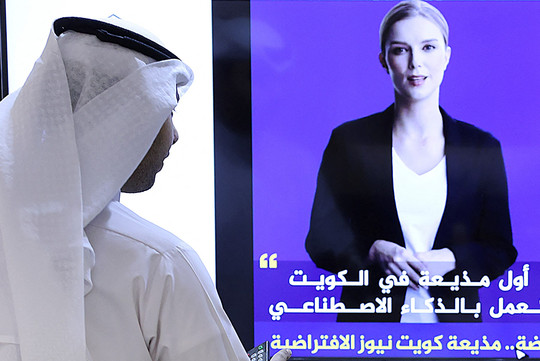1. How do you see journalists benefiting from AI’s latest developments?
AI has the capacity to speed up and enhance lots of tasks, from analysing data sets, to writing formal requests, translating, and undertaking complex searches. It will probably be used for repurposing stories for other markets, in different styles of writing or languages. It could have the potential for undertaking routine research, in the way that one might make door-to-door enquiries. There have been experiments with AI-generated news anchors. Will they catch on? I’m not sure.. All have the potential to make work more efficient and impactful.
2. Which media jobs are most at risk at the moment?
Quite how AI will affect jobs remains to be seen. AI has been described as the most useful assistant that a journalist can have, and it is probably the roles that a secondary to primary news gathering that are most at risk. Sub editors have been losing their jobs for many years, and I fear that trend will continue, likewise those who adapt work for secondary use. AI has a capacity to produce graphics – never as good as those created by real illustrators, but I am sure that some publishers will be tempted to use machines instead. AI is also a powerful tool in video and audio editing, potentially opening possibilities to reduce the numbers required to create complete broadcast packages.
3. How can unions best respond to jobs threatened by AI?
It is critical that trades unions are involved in the practical details of how AI is deployed by journalists. They must ensure that savings, where they are achieved, are used to enhance journalism, not simply to cut costs. Just as important is retaining human responsibility for all editorial work, and ensuring that safeguards are in place to safeguard the integrity of news. In all, agreements between workers and their employers are arguably the quickest, more effective and most efficient route to regulating such matters.
4. One of the main concerns in newsrooms is the requirement to authentify content. How do you see this developing?
Any responsible news organisation should insist that a human author should take responsibility for each content produced. I am less concerned about AI material used in parody, than by any attempt to use AI to create news stories.The way AI will be regulated remains to be seen, although the latest EU developments bring hope that the most negative effects of AI can be limited by regulations.
5. Do you see the SAG-AFTRA (Screen Actors Guild- American Federation of Television and Radio Artists) agreement reached in December 2023 on AI use of film content as a positive move and the way forward for unions?
SAG AFTRA's members' 118 days of strike last year was the first major claim by creators for a fair share of whatever AI might fashion from their raw material. Their agreement could potentially frame similar negotiations for generations to come. It is obvious that in the near future, if not already, AI will learn from scenes in films that have already been shot, and recreate the same characters doing different things, or saying alternative words. It can’t do this without the raw material provided by the original actors, but it will be able to replicate their work. The same is true in every field of creation – words, music and pictures.
If creators assign their rights in the raw material on which fresh creations depend, their ability to make a living will be grievously damaged.
6. New "strategic partnerships" have been established between the Financial Times, Associated Press, Axel Springer or Le Monde and Microsoft's Open AI. How can we make sure journalists unions will be involved in future negotiations?
Media companies have been rightly alleging copyright infringement over the use of their content to train AI products. But these contents also belong to journalists. Journalists own authors' rights over the works they produce, can oppose major modification of their work and claim payment for the reuse or selling of their work to third entities. This is exactly what is at stake here. The latest agreement signed in France by our affiliates and Le Monde and granting journalists 25% of the amount paid by GAFAM to the national daily, including the sums received as part of the Open AI agreement, is a good way forward and I hope it will be used as an example by journalists unions across the world.
Unions should be demanding their own seat at the negotiating table with Microsoft and other tech giants. The news brands will, inevitably, serve their own interests. Time and again we have seen that the best defenders of journalism are journalists ourselves.
The IFJ will hold a round table for journalists’ leaders from all over the world next week in London on the role of journalists unions in tackling AI challenges. We hope there to adopt a declaration to set out our position and motivate unions the world over to negotiate for their members in respect of how AI is deployed, and to whom benefits accrue.
*Tadamis an EU-Funded project looking into challenges, best practices and educational resources on artificial intelligence and media.

